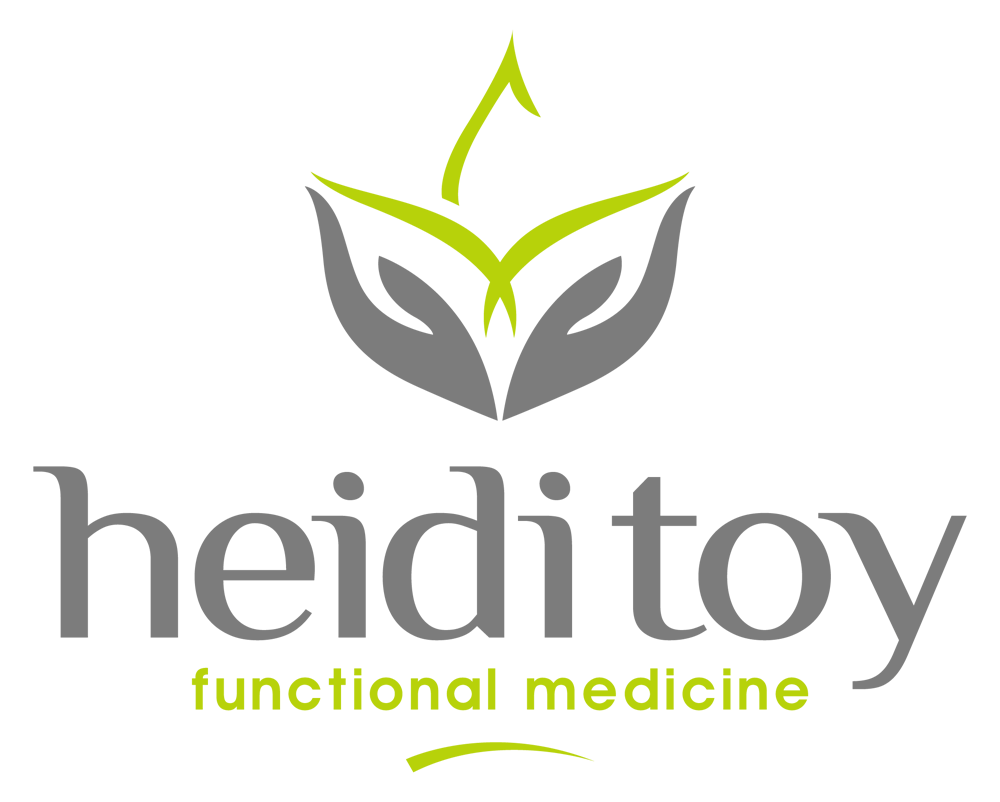Gut Rot: The Who, The Why and The What
What is the meaning of “Gut Rot”?
Gut Rot is a colloquial term for something wrong with the gastrointestinal tract.
The term is a description of a common and general pain symptom which means that, despite its severe sound, it can apply to almost any condition which involves some kind of pain or aliment in the gut. That means hangovers, stomach aches, tummy bugs, or more serious, long-term problems like Gut Dysbiosis, Leaky Gut Syndrome, or chronic indigestion. If it’s got pain, it’s gut rot.
Of course, in a technical sense, food does rot in the gut naturally. Rot is defined as decay due to the actions of bacteria upon a subject. Indeed, the bacteria of the microbiome do induce decay of various consumed nutrients (though they are not primarily responsible for the breakdown of food, that is done first and foremost by the hydrochloric acid of the stomach). This is nothing to be concerned about as it is part of your symbiotic relationship with your gut bacteria, and you gain nutrients you otherwise would not have had access to in the process.
In the term gut rot, rot is clearly used not for its technical finesse but because of the psychological negative implications of the term.
Why does Gut Rot occur?
As previously mentioned, gut rot mainly refers to an abdominal pain symptom, one for which many sources exist. Let’s look at some common causes of gut pain and some ways we can improve the situation from a functional perspective.
Acute Severe Ailments?
If you are suffering from sudden and severe gut pain, you should take advice from a physician at your earliest convenience. Functional medicine is excellent but focuses primarily on prevention and chronic issues. A number of severe acute issues can result in gut pain, such as appendicitis or ectopic pregnancy, and these are best treated by Western medicine.
Acute Minor Ailments?
In many cases, gut rot will occur out of the blue in a highly acute manner. Acute minor ailments are not to be ignored as they may be signs of deeper disturbances if recurrent, but if you are taking your last swig of kombucha as part of your cohesive functional diet and you feel pain in your tummy, relax. In all probability, it’s a little wind trapped in one of the pockets and pouches of the gut. Suppose you are having powerful symptoms of this type without having had anything particularly carbonated. In that case, it may be something to watch, as although gas is naturally produced during the digestion of many foods, excess may indicate you have some intolerances.
It may also be indigestion, which can happen from time to time, but on a regular basis could indicate your eating habits are misaligned with your digestive systems sensitivities. If it’s a one-time thing, then a great short-term solution is a cool glass of unpasteurized milk. Not only is this soothing, delicious, and nutritious, but milk is alkaline, which means it can help neutralize some of the acid to reduce the burn.
Then there is constipation, a common cause of gut rot, which can be very painful despite its simple nature. Constipation is characterized by difficulty passing stools (aka doing a poo). Most of the time, acute constipation is caused by one of 3 things:
Poor fiber content in the diet.- Dehydration.
- Sedentary lifestyle.
If you are struggling with stomach pain due to constipation, hydrate as soon as possible, then start moving around after a few minutes (depending on severity). Water can take as little as 5 minutes to be processed by the body, which means relief can be remarkably rapid from hydration. Dehydrated feces becomes harder, meaning that natural peristalsis is less effective at moving the contents along their route, but its attempt to do so can also be painful. Let this experience be a warning to get your body moving, revamp your diet, and generally keep yourself hydrated. Constipation can be chronic too, in which instance dietary changes are a first step to improvement.
Poisoning and Alcohol Consumption
Alcohol consumption (a form of poisoning) is a common cause of gut pain because it irritates the gut lining, which leads to inflammation and deterioration. Furthermore, its dehydrative effects dry out the contents of the bowel, leading to constipation. The corresponding gut pains can occur anytime during or shortly after consumption. However, the damage can remain in a long-lasting form as hidden inflammation if consumption is regular and in excess. Alcohol is so well known for its painful side effects that “gut rot” is a slang term for poor quality alcohol, not because better alcohol is without these effects, but rather that inferior alcohol brings with it very little apart from these painful consequences.
Functional medicine prescribes an excellent solution to alcohol poisoning and hangovers which helps avoid these painful side effects. Stop drinking alcohol. The adverse effects of alcohol are widespread, and gut rot is just the start of your troubles as a consistent user. While it can be tempting due to its obvious enjoyable benefits, it is almost always a terrible trade-off. Please, avoid alcohol consumption wherever possible.
From a functional perspective, the same “prevention is better than cure” should be applied to other chemical poisons which might cause gut rot too. These include but aren’t limited to pesticides. Of course, chemical poisons are numerous with widely varying effects, and you may not be aware you have consumed them. If you think your gut pain may be due to the consumption of a severe poison, it’s advisable to seek direct and personalized medical advice as soon as possible.
Infections
Gut infections are notorious for causing powerful temporary discomfort, which generally subsides within a week (though any infection can have profound, unexpected consequences). There are various types of infections of the gut, most commonly picked up through poorly cooked food, aka food poisoning.
One way we can help protect against infection is by stabilizing the microbiome. Most who are not conscious of the health of their microbiota have poor microbiotic health, as it is so easy to inadvertently damage the delicate balance of the microbiome in today’s day and age. Having this imbalance, known as gut dysbiosis, can result in increased risk factors for infection. Taking measures to stabilize the microbiome will help ward off bacterial colonizers that might otherwise take root.
Beyond simply creating a diverse and competitive environment in which foreign bacteria cannot easily take hold, having a strong microbiome helps to protect against inflammation of the gut lining, meaning a sturdier barrier between pathogens and the bloodstream. Staying aware of your microbial balance can be a great help when trying to stay the hand of infection.
Chronic Conditions
Irritable Bowel Syndrome
Irritable Bowel Syndrome (IBS) is a prime example of a chronic condition closely associated with gut rot. It also tends to come with fluctuations in stool quality. It is a painful condition often treated by Western medicine using overzealous drug prescriptions with no shortage of adverse side effects. Daily life can be plagued with serious gut pains for individuals with IBS. While no definitive cause of IBS is identified, we know of specific factors that play a role in its management and mechanisms of effect.
Functional medicine takes a no less scientific but notably less pharmaceutical approach to IBS, analyzing these factors for areas of improvement and developing personalized strategies for the reduction of effect in sufferers.
Once again, the gut microbiome can have powerful effects on IBS, and
gut dysbiosis is a known risk factor for its development. The direct exposure of the epithelial lining to the gut environment results in inflammation and irritation over extended periods. It’s important to ensure your diet and behaviors are microbiome friendly to minimize development risks or symptoms where IBS is present. Find out more about balancing the microbiome in my blog “Gut Dysbiosis: A Biotic Balancing Act”.
Your Hypothalamic Pituitary Axis (HPA) also plays a role in IBS. This means it’s essential to be wary of potential adrenal fatigue or Hypothalamic Pituitary Axis Dysfunction (HPA-D). Adrenal fatigue involves the overproduction of cortisol (the stress hormone) for a time, and cortisol can create digestive problems, suppress the immune response, and even induce gut dysbiosis.
Neurotransmitters also bear relevance to irritable bowel syndrome, as psychological factors such as stress and reward systems are thought to play a role in its development. Finding out if there are any neurotransmitters that are lacking in abundance, then treatment with amino acids is an excellent functional option.
Other factors that are explored in functional practice include (but, importantly, are not limited to) liver damage, stomach acid levels, dietary habits, and sex-specific hormone analysis.
Inflammatory Bowel Disease
Inflammatory Bowel Disease is a painful condition affecting the gut. It is a blanket term for several diseases that fit this characteristic (most notably Crohn’s, Ulcerative Colitis, and Endometriosis).
Once again, and we are really seeing the importance of the microbiome here, gut dysbiosis is a risk factor. Inflammation of the gut lining is one of the main problems resulting from microbiome imbalance. As a functional medicine practitioner, it’s where I’d look first with a case of IBD.
Autoimmunes can also lead to IBD, and gut dysbiosis is actually a key gateway to getting an autoimmune due to its ability to induce leaky gut syndrome, exposing the immune system to healthy and useful binding sites in a context where they are seen as pathogenic.
That means microbiome imbalance is a double whammy from your Inflammation.
Stomach Ulcers
The stomach is generally a very resilient part of the body due to its constant exposure to all kinds of consumed substances and its inherent hydrochloric acid. Sometimes, however, the lining of the stomach breaks down, resulting in a sore forming, which can cause long-term gut pain.
One of the main functional concerns with regard to stomach ulcers is the stress response. There is contention as to whether or not stress contributes to stomach ulcers. We do know that stress increases acid production and decreases the healing factor, resulting in increased vulnerability to an event that results in stomach ulcers. Furthermore, stress often results in higher use of drugs conducive to the ulcers or smoking and drinking behaviors which are also risk factors.
Therein, we look at diet, boosting antioxidants, and anti-inflammatories, with a particular focus on zinc because it is a precursor to Zinc-L-Carnosine, a data-backed natural option for ulcer reduction.
Other Conditions
The list of conditions or issues which could theoretically occur that might cause a gut rot symptom is very long. Still, ultimately the functional approach will always revolve around similar key elements.
Emotional Stress
Dietary Stress
Pain and Hidden Inflammation
So who is getting gut rot, and who is gonna fix it?
Everyone will get a bit of gut rot from time to time, but we can now see the outline of the person who has already got their ticket punched for regular problems.
- They don’t care about the microbiome.
- They don’t hydrate.
- They don’t get good fiber intake.
- They don’t take time to destress or put in place stress management measures that aren’t self-destructive in their own right.
- They drink lots of alcohol.
- They may, very unfortunately, have pre-existing conditions or tendencies over which they had minimal control.
If this person doesn’t have near-constant gut pain, it’s nothing short of a miracle, and it certainly won’t last forever.
If you don’t like the sound of gut rot (and let’s face it, who does), then
book a discovery session with me, and we will get you going in the right direction. Functional medicine has the tools to beat back even chronic conditions, and I’ve seen it play out firsthand for hundreds upon hundreds of clients. I’ve designed a course called EnergyRx which gives you those tools and lets you take your health into your own hands, or we can work one to one, and I can guide you on a personal level to your brighter future.
Don't Miss Out On More!

Heidi Toy FNTP
I help people all over the world heal by identifying and treating the root cause of their body imbalances. Through diet and nutrition, I guide them towards wholeness and balanced lives.
Heidi Toy Functional Medicine Blog














































































































